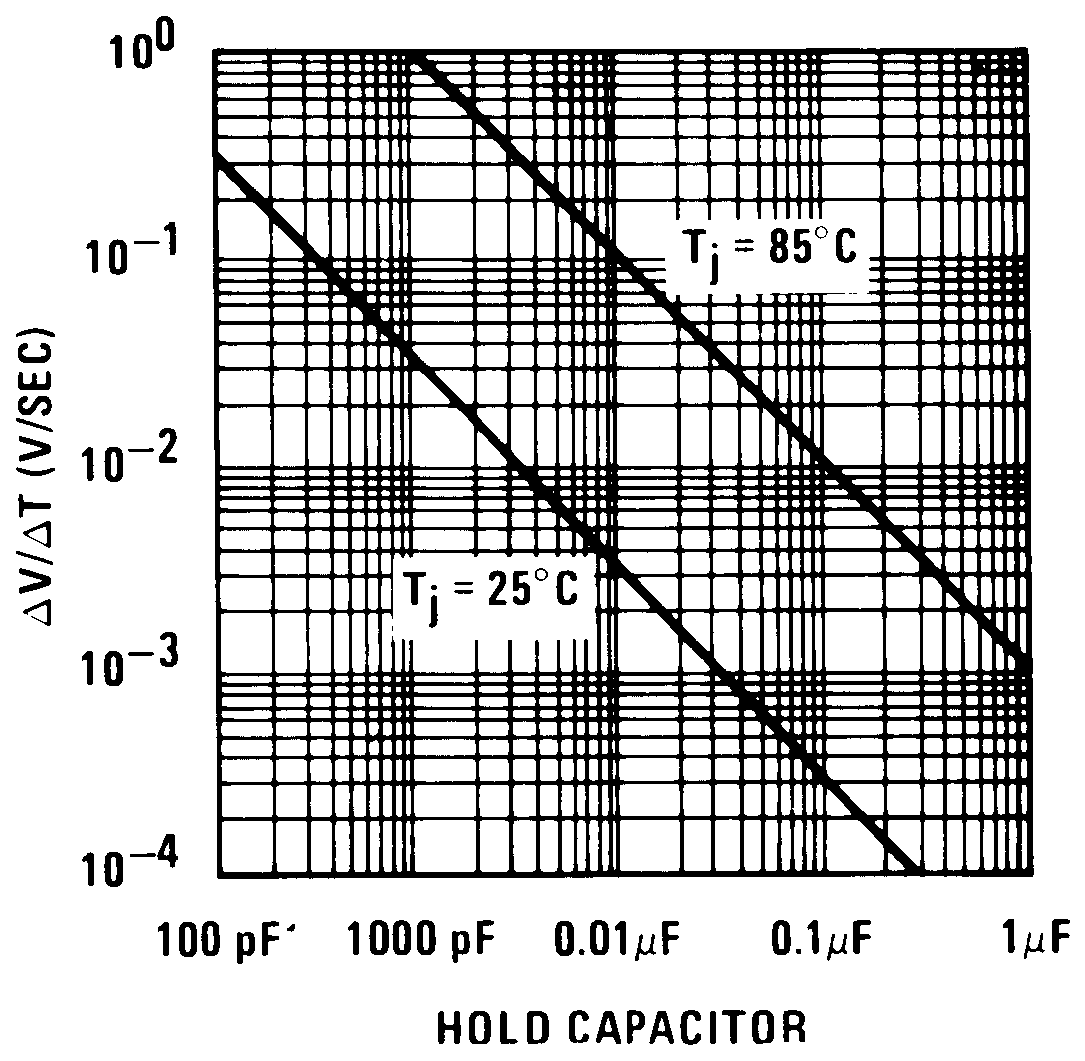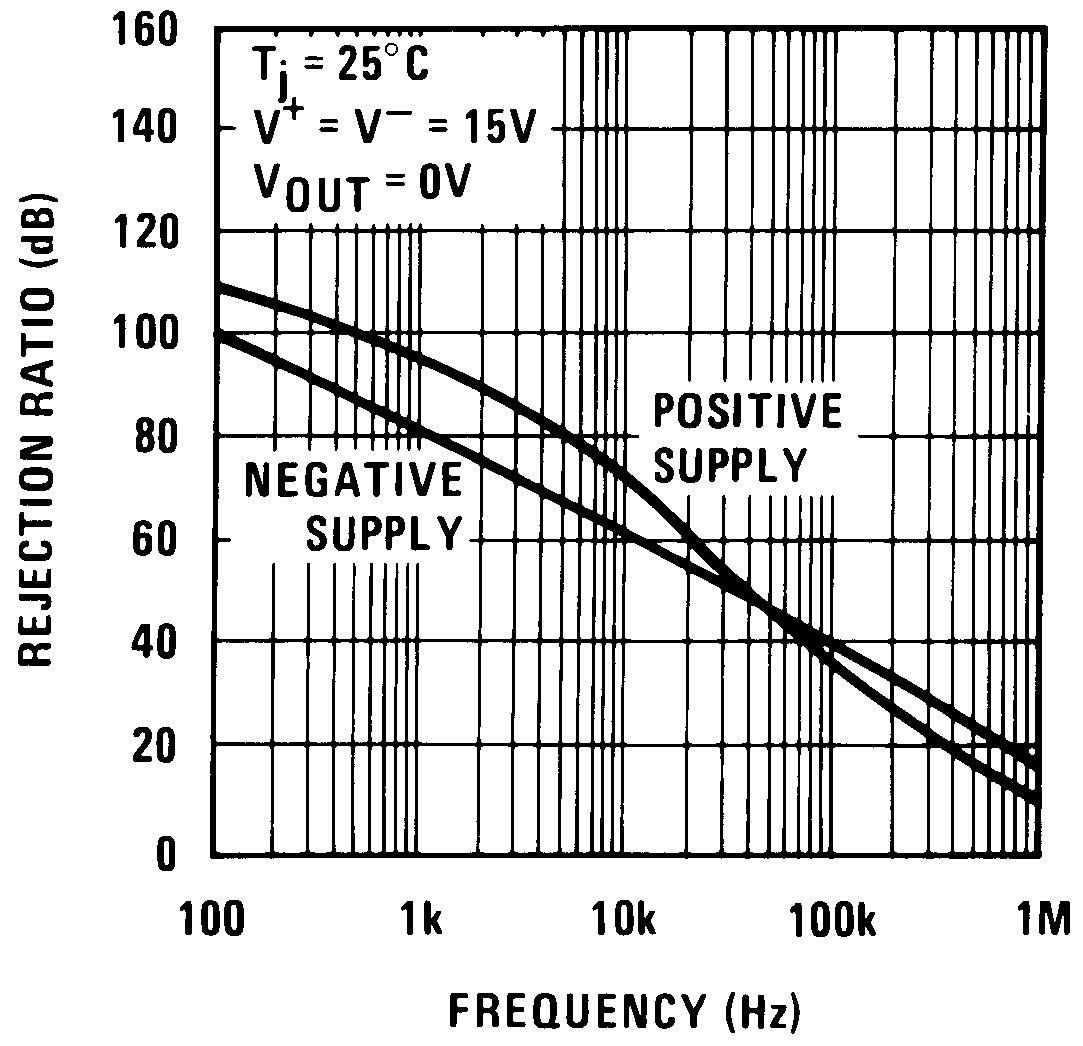SNOSBI3C July 2000 – October 2018 LF198-N , LF298 , LF398-N
PRODUCTION DATA.
- 1 Features
- 2 Applications
- 3 Description
- 4 Revision History
- 5 Pin Configuration and Functions
-
6 Specifications
- 6.1 Absolute Maximum Ratings
- 6.2 Recommended Operating Conditions
- 6.3 Thermal Information
- 6.4 Electrical Characteristics, LF198-N and LF298
- 6.5 Electrical Characteristics, LF198A-N
- 6.6 Electrical Characteristics, LF398-N
- 6.7 Electrical Characteristics, LF398A-N (OBSOLETE)
- 6.8 Typical Characteristics
- 7 Parameter Measurement Information
- 8 Detailed Description
-
9 Application and Implementation
- 9.1 Application Information
- 9.2
Typical Applications
- 9.2.1 X1000 Sample and Hold
- 9.2.2 Sample and Difference Circuit
- 9.2.3 Ramp Generator With Variable Reset Level
- 9.2.4 Integrator With Programmable Reset Level
- 9.2.5 Output Holds at Average of Sampled Input
- 9.2.6 Increased Slew Current
- 9.2.7 Reset Stabilized Amplifier
- 9.2.8 Fast Acquisition, Low Droop Sample and Hold
- 9.2.9 Synchronous Correlator for Recovering Signals Below Noise Level
- 9.2.10 2-Channel Switch
- 9.2.11 DC and AC Zeroing
- 9.2.12 Staircase Generator
- 9.2.13 Differential Hold
- 9.2.14 Capacitor Hysteresis Compensation
- 10Power Supply Recommendations
- 11Layout
- 12Device and Documentation Support
- 13Mechanical, Packaging, and Orderable Information
Package Options
Mechanical Data (Package|Pins)
- D|14
Thermal pad, mechanical data (Package|Pins)
Orderable Information
6.8 Typical Characteristics
 Figure 1. Aperture Time
Figure 1. Aperture Time  Figure 3. Dynamic Sampling Error
Figure 3. Dynamic Sampling Error  Figure 5. Hold Step
Figure 5. Hold Step  Figure 7. Leakage Current into Hold Capacitor
Figure 7. Leakage Current into Hold Capacitor  Figure 9. Gain Error
Figure 9. Gain Error  Figure 11. Output Short Circuit Current
Figure 11. Output Short Circuit Current  Figure 13. Input Bias Current
Figure 13. Input Bias Current  Figure 15. Hold Step vs Input Voltage
Figure 15. Hold Step vs Input Voltage  Figure 17. Output Transient at Start of Hold Mode
Figure 17. Output Transient at Start of Hold Mode  Figure 2. Dielectric Absorption Error in Hold Capacitor
Figure 2. Dielectric Absorption Error in Hold Capacitor  Figure 4. Output Droop Rate
Figure 4. Output Droop Rate  Figure 6. Hold Settling Time
Figure 6. Hold Settling Time  Figure 8. Phase and Gain (Input to Output, Small Signal)
Figure 8. Phase and Gain (Input to Output, Small Signal)  Figure 10. Power Supply Rejection
Figure 10. Power Supply Rejection  Figure 12. Output Noise
Figure 12. Output Noise  Figure 14. Feedthrough Rejection Ratio (Hold Mode)
Figure 14. Feedthrough Rejection Ratio (Hold Mode)  Figure 16. Output Transient at Start of Sample Mode
Figure 16. Output Transient at Start of Sample Mode